
The Curtiss A-12 Shrike was the United States Army Air Corps' second monoplane ground-attack aircraft, and its main attack aircraft through most of the 1930s. It was based on the A-8, but had a radial engine instead of the A-8's inline, water-cooled engine, as well as other changes.

The Curtiss A-8 was a low-wing monoplane ground-attack aircraft built by the United States company Curtiss Aeroplane and Motor Company, designed in response to a 1929 United States Army Air Corps requirement for an attack aircraft to replace the A-3 Falcon. The Model 59 "Shrike" was designated XA-8.

The Douglas Y1B-7 was a 1930s American bomber aircraft. It was the first US monoplane given the B- 'bomber' designation. The monoplane was more practical and less expensive than the biplane, and the United States Army Air Corps chose to experiment with monoplanes for this reason. At the time the XB-7 was ordered, it was being tested by Douglas Aircraft as an observational plane.

The Caproni Ca.37 was a ground attack aircraft designed and built in Italy by Caproni around 1916
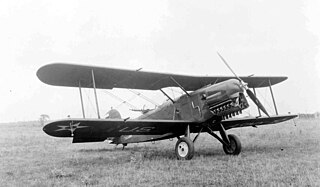
The Douglas XA-2 was an American prototype attack aircraft converted from a Douglas O-2 observation aircraft in the spring of 1926 by Douglas Aircraft. Only one prototype aircraft was built and the type was not ordered into production.
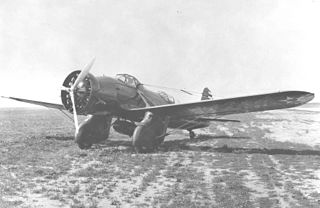
The Curtiss YA-10 Shrike was a 1930s United States test and development version of the A-8 Shrike ground-attack aircraft using various radial engines in place of the inline Vee.

The Curtiss XA-14 was a 1930s United States airplane, the first multi-engine attack aircraft tested by the United States Army Air Corps. Carrying a crew of two, it was as fast as the standard pursuit aircraft in service at the time.
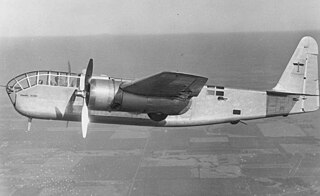
The Stearman XA-21 was a competitor in a United States Army Air Corps competition for a twin-engined attack aircraft which led to the Douglas A-20 Havoc, Martin A-22 Maryland and North American B-25 Mitchell.
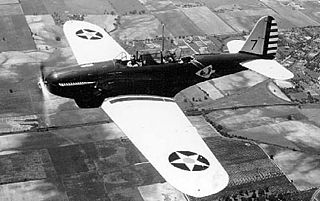
The Consolidated P-30 (PB-2) was a 1930s United States two-seat fighter aircraft. An attack version called the A-11 was also built, along with two Y1P-25 prototypes and YP-27, Y1P-28, and XP-33 proposals. The P-30 is significant for being the first fighter in United States Army Air Corps service to have retractable landing gear, an enclosed and heated cockpit for the pilot, and an exhaust-driven turbo-supercharger for altitude operation.

The Heinkel He 45 was a light bomber produced in Germany in the early 1930s, one of the first aircraft adopted by the newly formed Luftwaffe. Its appearance was that of a conventional biplane and included seating for pilot and gunner in tandem, open cockpits. Developed in parallel with the He 46, it appeared in 1931 as a general-purpose biplane and was employed mainly as a trainer, but was also used by the Luftwaffe for reconnaissance and light bombing duties. Production of this plane totalled 512 aircraft, including those built under licence by Gotha, Focke-Wulf, and BFW.

The Henschel Hs 124 was a twin-engine heavy fighter, attack aircraft and light bomber designed in Nazi Germany. After two prototypes had been built, work on the project was cancelled.
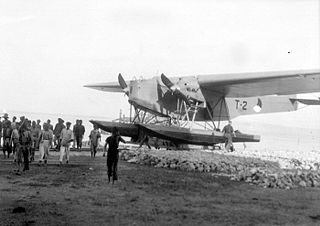
The Fokker T.IV was a Dutch torpedo bomber/maritime reconnaissance floatplane of the 1920s and 1930s. First flying in 1927, it served with the Dutch Naval Aviation Service in the Dutch East Indies until the remaining aircraft were destroyed during the Japanese invasion in 1942.
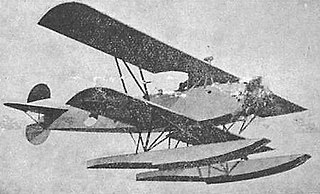
The Fokker C.VII-W was a reconnaissance seaplane built in the Netherlands in the late 1920s. Sharing elements of the highly successful C.V design, the C.VII-W was a conventional, single-bay biplane with wings of unequal span braced with N-struts. The undercarriage consisted of a standard twin-pontoon arrangement, and the fin and rudder continued through to the ventral side of the fuselage, creating a cruciform tail. The pilot and observer sat in tandem, open cockpits. The wing structure was wooden with fabric and plywood covering, and the fuselage was of steel tube construction with fabric covering.

The Fokker C.VIII was a reconnaissance aircraft built in the Netherlands in the late 1920s. Intended primarily for the photographic reconnaissance role, it was a larger machine than other Fokker reconnaissance types of the period, with space for a third crew member, who acted as camera operator. It was also Fokker's first aircraft of this type to be built as a monoplane, a parasol wing configuration. The construction, however, was in the familiar Fokker style with wooden wings covered with plywood and fabric, and a steel-tube fuselage, also fabric-covered.

The Fokker D.XVI was a sesquiplane fighter aircraft developed in the Netherlands in the late 1920s.

The Douglas XFD was a carrier-based biplane fighter aircraft designed for the United States Navy, and the first fighter to be built by the Douglas Aircraft Company. A victim of changing requirements, no production was undertaken.
The Aviatik C.IX was a prototype German observation aircraft built by Aviatik in the final months of World War I.
The Aviatik C.VIII was a prototype German observation aircraft built by Aviatik in World War I.

The Bréguet XI was a prototype French biplane bomber of the First World War.
The Heinkel HD 34 was a reconnaissance bomber built in Germany in the late 1920s.

















